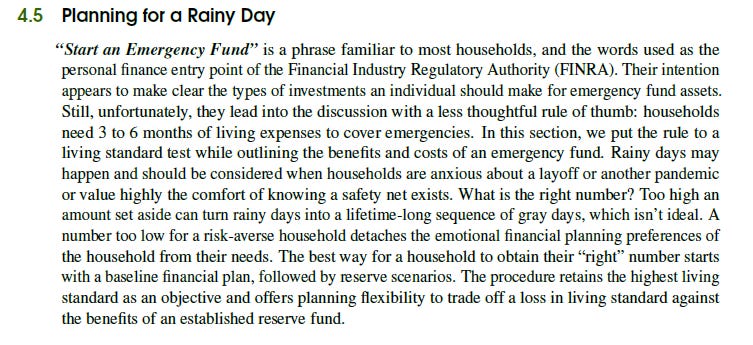We fit into one of three households: one of limited means, with a transactional checking account, maybe a small savings account, just getting started or getting by. Or a household with at least $750,000 of cash and investments in checking and brokerage accounts, that catches the eye of bread-and-butter financial advisors but is a tad short of the $10 million group who are the target of the well-heeled private wealth managers. Most fit in between. Individuals and families paying the bills, an IRA or 401(k), imagining the next vacation.
Poking around the financial press, a retread personal finance article resurrects the tired old saw, “experts say you should have 3 to 6 months of living expenses saved, in case you have an emergency.” Beware. It is a rule of thumb that doesn’t care about you.
Households have different financial pressures, resources, and risk tolerances. We teach a measurable approach to help you determine whether a dedicated rainy day fund is appropriate. Your cash today matters, and your preferences matter. Today’s installment of our book extends the set of financial planning questions with a step-by-step, economics-based answer about your rainy day fund.
Today: A two-topic bonus in this release. How should a household choose its best level of rainy day fund, and how should the benefits of shared living be measured? The latter is sneaky-important because it is the way to determine life insurance needs among adults who share economic dependency and, less happily, how to estimate the cost of a divorce.
Two snippets below and illustrative case studies in between.






